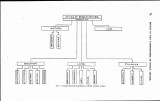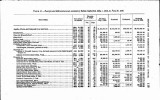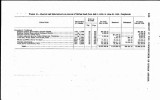| OCR Text |
Show 64 REPORT OF THE COMMISSIONEB OF INDIAN AFFAIRS. 1909, 88 applications were approved, covering an area of 7,996.70 acres, making a total number of 494 applications approved under the act of June 21, 1906; total area patented, 41,878.70 acres. CERTIFICATE OF COMPETENCY OF OSAGE INDIANS. Paragraph 7, section 2, of the Osage allotment act (34 Stat. L., 539), provides: That the Secretary of the Interior, in his discretion, at the request and upon the petition of any dult member of the tribe, m y issue to such member a certificate of competency, authorizing him to sell and convey any of the lands deeded him by reason of this act, exceDt his homestead. which &dl remain inalienable and nontaxable for a period of twenty-five yvars, or duriug the l i f e ~tih e humerteacl allottee, ii upon inv4.s- a tigation, consideration, and rrurnination of the rpqueat he chall find any RUVL m~ti~ber fuily competent and cipable of tramacting his orber own businem aid caring for his or her own individual aff~ira. Thirty-six certificates of competency have been issued. KICKAPOO INDIANS. The actions brought originally in the territorial district court of Oklahoma Territory to set aside deeds made by certain Kickapoo Indians immediately after the passage of the act of June 21, 1906 (34 Stat. L., 325), which act removed all restrictions on the alienation of their land, are still pending. The petitions have been amended in order to make them conform to the federal practice and to incor-porate certain facts brought out by theinvestigation of the Senate subcommittee into the affairs of the Kickapoo Indians. It is expected that a judicial determination of the several questions involved will be had during the coming year. INDIVIDUAL INDIAN MONEYS. The care of individual Indian moneys has assumed large propor-tions. These funds are derived from the sale of inherited lands, the leasing of lands for agricultural and grazing purposes, sales of timber from the allotments of individual Indians, and royalty from oil and gas. The funds are deposited in national banks, secured by bonds, in most cases made by bonding companies. At the beginning of the year 1909 the bonding companies materially raised the rates charged as premiums on these bonds. The effect of this bas been that banks bidding for the deposits of this money have necessarily bid a lower rate of interest than heretofore. The office has under consideration a plan of allowing banks to secure these funds by depositing as collateral a high grade of securities, such as United States, state, and municipal bonds. No definite plan has yet been worked out. Tables 35 and 36 shows the amount of bonds at different agencies and indicates where most of this money arises. |









































































































































































